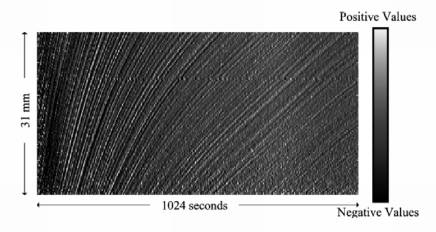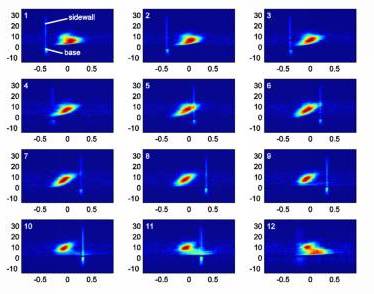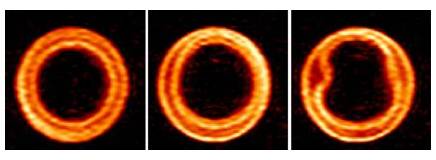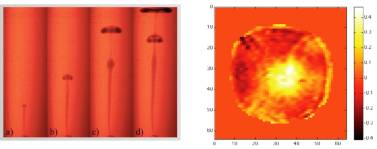Research
My research interests concern the development and application of quantitative multi-nuclear magnetic resonance techniques to problems encountered in the chemical and pharmaceutical industries. Magnetic resonance imaging and spectroscopy are ideally suited to address these areas because they are:
• Non-invasive
• Chemically selective
• Motion sensitive: flow, diffusion, and dispersion
• Multinuclear
As Assistant Director of Research for the Department of Chemical Engineering's Magnetic Resonance Research Centre, I am directly responsible for overseeing the day-to-day operation of the Magnetic Resonance Research Centre (MRRC). In addition, I act as the focal point for all external collaborative research programmes. The MRRC currently houses six research grade MRI spectrometers:
Bruker SWB DMX 200 & WB 300 MHz spectrometers; A Bruker WB AV 400 MHz spectrometer; A Bruker Biospec (Horizontal Bore) AV 85 MHz spectrometer; A 40 MHz permanet magnet benchtop system and a Magritek Earth's field spectrometer. I am currently involved in number of research collaborations with academic and industrial institutions including:
 |
MRI studies of foams in collaboration with Dr Paul Stevenson, University of Newcastle, Australia. The figure to the left shows the first derivative with respect to time of the 1H NMR signal (vertical axis) from a draining foam (gravity is acting from top to bottom). The gradient of the 'ripples' in the image clearly show that the foam rises as the liquid interface below increases. |
 |
MRI studies of Vibro-fluidised beds, in collaboration with Prof. Jon Huntley, Dr Ricky Wildman (University of Loughborough) and Dr Mark Shattuck (City University New York, USA). The figure on the left shows the velocity distribution (horizontal axis) vs. axial height (vertical axis) of a vibrating bed of mustard seeds. Each individual plot represents a different phase within one cycle of the vibration. |
 |
Ultra fast MRI studies of turbulent flow in collaboration with Prof Tom Mullin & Dr James Seddon, University of Manchester. The figure on the left shows how an initially symmetric water flow (central water not visible due to washout) becomes unstable and asymmetric. |
 |
Ultra fast MRI studies of buoyant chemical plumes with Prof Steven Morris and Mr Michael Rogers, University of Toronto, Canada. The left hand picture above show photographs of the temporal evolution of a buoyant chemical plume. The right hand MRI image shows a Vzvelocity MR image taken through the nose of the chemical plume. |
Publications
Stevenson P, Mantle MD, Sederman AJ, et al. Quantitative measurements of liquid hold-up and drainage in foam using NMRI AICHE JOURNAL 53 (2): 290-296 FEB 2007.
Muller CR, Davidson JF, Dennis JS, et al. Rise velocities of bubbles and slugs in gas-fluidised beds: Ultra-fast magnetic resonance imaging CHEMICAL ENGINEERING SCIENCE 62 (1-2): 82-93 JAN 2007.
Gladden LF, Mantle MD, Sederman AJ Magnetic resonance Imaging of catalysts and catalytic processes ADVANCES IN CATALYSIS 50: 1-75 2006.
Mantle MD, Steiner P, Gladden LF Polarisation enhanced C-13 magnetic resonance studies of the hydrogenation of pentene over Pd/Al2O3 catalysts CATALYSIS TODAY 114 (4): 412-417 MAY 30 2006.
Sederman AJ, Mantle MD, Buckley C, et al. MRI technique for measurement of velocity vectors, acceleration, and autocorrelation functions in turbulent flow JOURNAL OF MAGNETIC RESONANCE 166 (2): 182-189 FEB 2004.
Mantle MD, Sederman AJ Dynamic MRI in chemical process and reaction engineering PROGRESS IN NUCLEAR MAGNETIC RESONANCE SPECTROSCOPY 43 (1-2): 3-60 OCT


